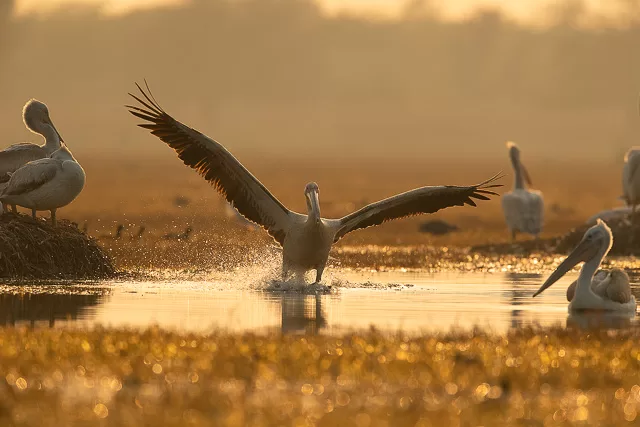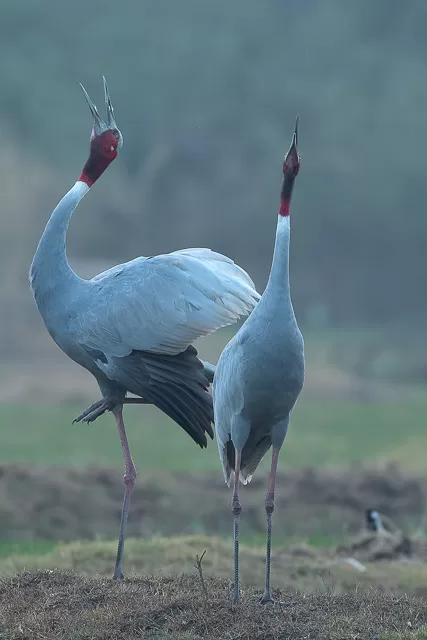About
Top Experiences
Type of Journey
Subscribe to newsletter and stay updated
Read about our travel expeditions, new destinations, new pictures, latest trip schedules
Bharatpur, a small town in eastern Rajasthan, houses the Bharatpur Bird Sanctuary or the Keoladeo National Park, one of the most popular birding sites of the country. The bird sanctuary is the wintering ground for a variety of species of ducks, coots, pelicans, and geese. In addition to a large number of threatened birds, the Bharatpur Bird Sanctuary was also the wintering ground of the Siberian Crane, a critically endangered species. But unfortunately, these beautiful birds have ceased visiting the sanctuary since 2002.
The Ghana National park, as the park is sometimes called, also boasts of a plethora of habitats with the farmlands, woodlands, and swamplands being the dominant ones. This wide variety of habitats are home to a large variety of mammals. Chitals, Nilgais, Wild Boars, Hanuman langur, Rhesus Macaque, Black-naped hare, smooth-coated otter, porcupine, mongoose, hyenas, jackals, a couple of species of cats and civets are some of the most famous animals that call the Keoladeo National Park their home.
OVERVIEW
Location: Bharatpur District, Rajasthan, India
Nearest Airport: Agra airport
How to reach: 1 hour from Agra airport
Famous for: Wetlands birding and photography
Best time to visit: November to March
WHAT TO SEE
Waterbirds (wetlands): Painted Stork, egret, cormorant, Asian Openbilled, Black-headed Ibis, Darter, Bronze-winged and Pheasant-tailed Jacanas, Northern Shoveler, teal, Ruddy Shelduck, Pintail, Mallard, Common Coot, Demoiselle and Sarus Cranes, Gadwall, Purple Moorhens.
Raptors: King Vulture, White-rumped Vulture, Black-shouldered Kite, Crested Serpent Eagle, Ring-tailed Fish Eagle, Pallas’s Fish Eagle, Dusky Horned Owl, Tawny Eagle, Marsh Harrier, Short-toed Eagle, Collared Scops Owl, Spotted Owlet
The Keoladeo National Park owes its original name to Lord Shiva and its pet name, the Ghana National Park, to the dense vegetation found in the region. The park has a unique history. Unlike most other sanctuaries, it did not exist naturally but was created by man. Also, the park was not created as a conservation effort but as the hunting ground of the royal family of Bharatpur and the British.
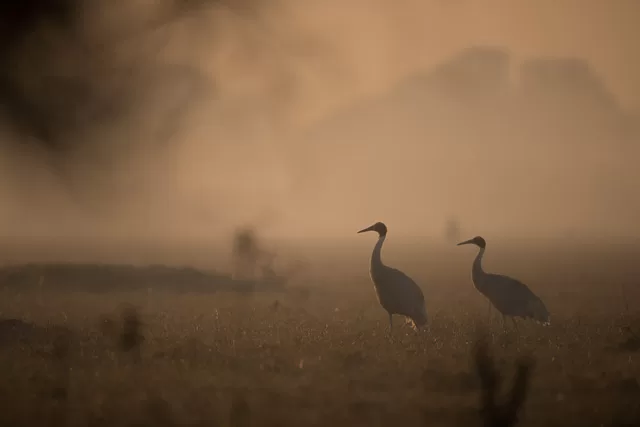
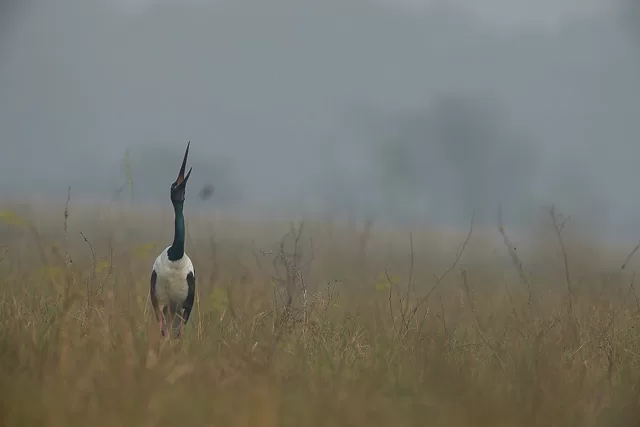
The park is laden with many well-defined trails that pass through the varied habitats found in the sanctuary. Guides play an important role in this park as all the trails aren’t named. The density of the crowd on a trail is more if its proximity to the entrance is less. Photographers who frequent the park follow specific trails that offer specific sightings. A visitor needs to spend at least a couple of days in the Keoladeo National Park to appreciate its diversity.
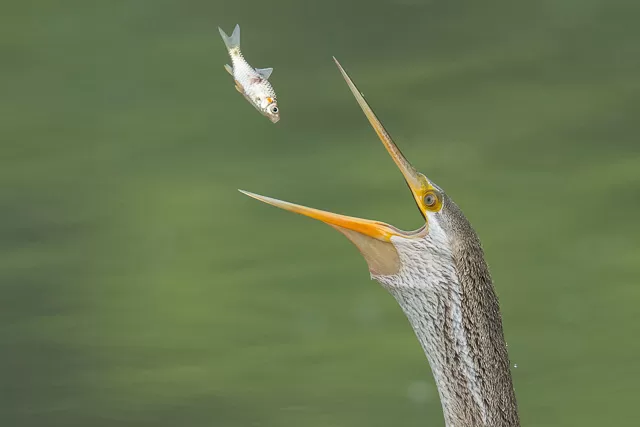
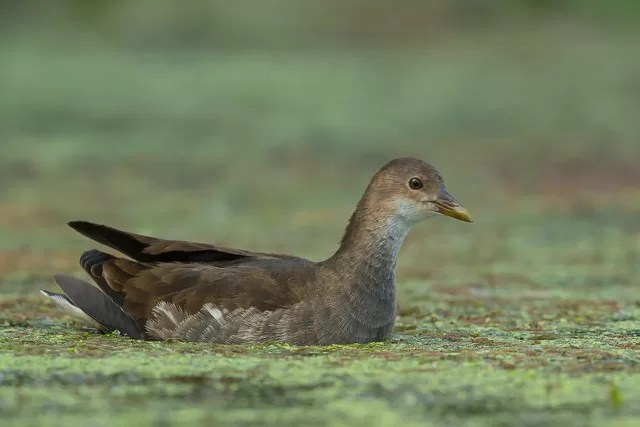
The park offers boat safari facility to its swampland habitats and submerged grasslands. Sambar, Nilgai, and aquatic bird sightings are especially good during the late afternoons and early evenings. As motor vehicles aren’t allowed inside the park, tourists have to either walk, cycle, or take a cycle rickshaw to get around.
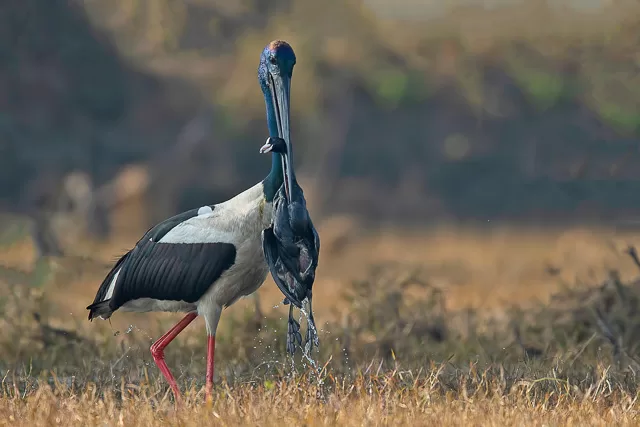
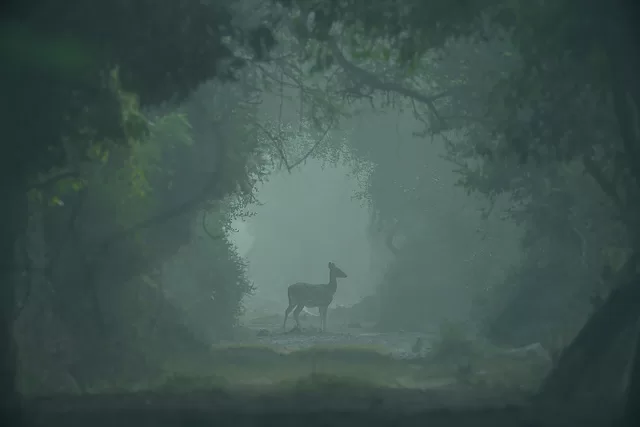
During the visit to the Bharatpur Bird Sanctuary, tourists can also opt for a day trip to Chambal, which is a two-hour drive away from the park. Boat safaris on river Chambal give tourists sightings of the threatened Indian Skimmers, the critically endangered Gharials, and a variety of other species.
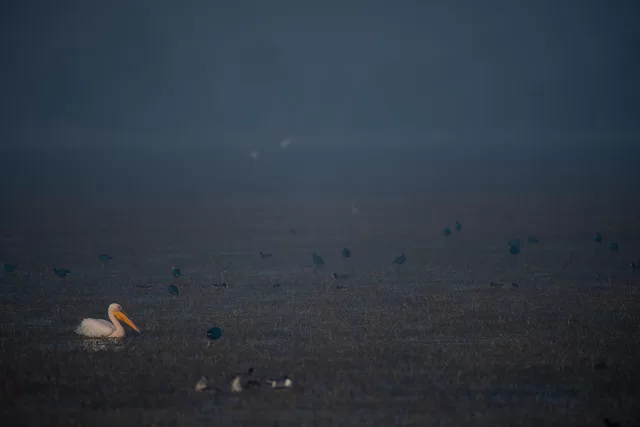
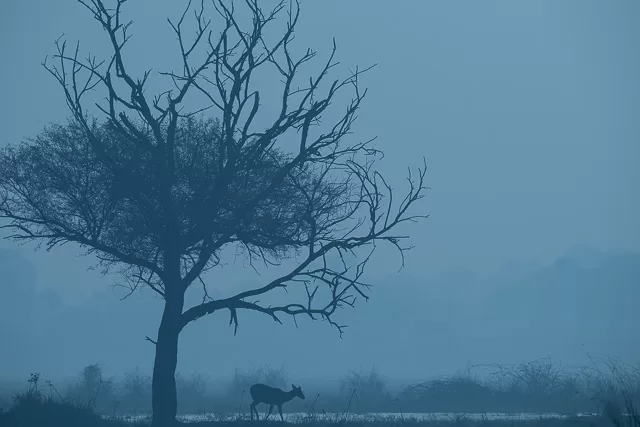
A first time visitor is sure to be awestruck by the huge numbers of waterfowl and waders which are seen on the shallow marshy lakes of Bharatpur. During Nov-Mar, it is the best time to visit the sanctuary. This time Palearctic migrants join the residents and the sanctuary brims with birds everywhere. An average day can still throw up many rare and threatened species like the Asian Openbill Storks, Common and Sarus Cranes, Dalmatian Pelicans, Indian and Grey Nightjars, Black Bittern, Greater Painted Snipe, Dusky Eagle Owls, Large-tailed, Marshall’s Iora, Siberian Rubythroat and Brook’s Leaf Warblers. Many species of ducks, innumerable raptors, waders, water-seeking birds and passerines all together make Bharatpur a true birder’s paradise.
